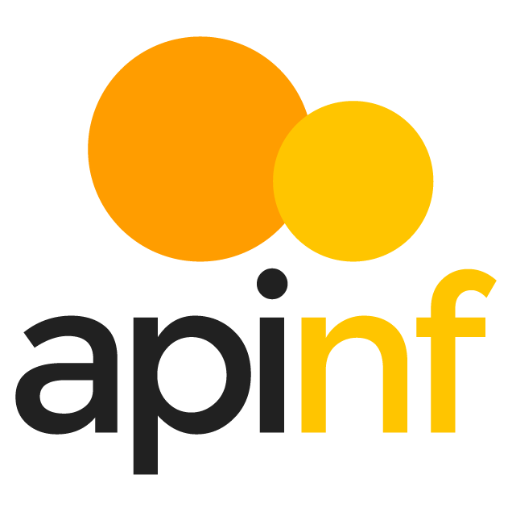Mock sample for your project: Spell Check Client API
Integrate with "Spell Check Client API" from microsoft.com in no time with Mockoon's ready to use mock sample

Spell Check Client
microsoft.com
Version: 1.0
Start working with "Spell Check Client API" right away by using this ready-to-use mock sample. API mocking can greatly speed up your application development by removing all the tedious tasks or issues: API key provisioning, account creation, unplanned downtime, etc.
It also helps reduce your dependency on third-party APIs and improves your integration tests' quality and reliability by accounting for random failures, slow response time, etc.
Description
The Spell Check API - V7 lets you check a text string for spelling and grammar errors.
Other APIs by microsoft.com

Custom Search Client
microsoft.com
The Bing Custom Search API lets you send a search query to Bing and get back search results customized to meet your custom search definition.

Visual Search Client
microsoft.com
Visual Search API lets you discover insights about an image such as visually similar images, shopping sources, and related searches. The API can also perform text recognition, identify entities (people, places, things), return other topical content for the user to explore, and more. For more information, see Visual Search Overview. NOTE: To comply with the new EU Copyright Directive in France, the Bing Visual Search API must omit some content from certain EU News sources for French users. The removed content may include thumbnail images and videos, video previews, and snippets which accompany search results from these sources. As a consequence, the Bing APIs may serve fewer results with thumbnail images and videos, video previews, and snippets to French users.

Custom Vision Prediction Client
microsoft.com

AutoSuggest Client
microsoft.com
Autosuggest supplies search terms derived from a root text sent to the service. The terms Autosuggest supplies are related to the root text based on similarity and their frequency or ratings of usefulness in other searches. For examples that show how to use Autosuggest, see Search using AutoSuggest.

Computer Vision Client
microsoft.com
The Computer Vision API provides state-of-the-art algorithms to process images and return information. For example, it can be used to determine if an image contains mature content, or it can be used to find all the faces in an image. It also has other features like estimating dominant and accent colors, categorizing the content of images, and describing an image with complete English sentences. Additionally, it can also intelligently generate images thumbnails for displaying large images effectively.

Computer Vision Client
microsoft.com
The Computer Vision API provides state-of-the-art algorithms to process images and return information. For example, it can be used to determine if an image contains mature content, or it can be used to find all the faces in an image. It also has other features like estimating dominant and accent colors, categorizing the content of images, and describing an image with complete English sentences. Additionally, it can also intelligently generate images thumbnails for displaying large images effectively.

Video Search Client
microsoft.com
The Video Search API lets you search on Bing for video that are relevant to the user's search query, for insights about a video or for videos that are trending based on search requests made by others. This section provides technical details about the query parameters and headers that you use to request videos and the JSON response objects that contain them. For examples that show how to make requests, see Searching the Web for Videos.

Image Search Client
microsoft.com
The Image Search API lets you send a search query to Bing and get back a list of relevant images. This section provides technical details about the query parameters and headers that you use to request images and the JSON response objects that contain them. For examples that show how to make requests, see Searching the Web for Images.

Web Search Client
microsoft.com
The Web Search API lets you send a search query to Bing and get back search results that include links to webpages, images, and more.

Entity Search Client
microsoft.com
The Entity Search API lets you send a search query to Bing and get back search results that include entities and places. Place results include restaurants, hotel, or other local businesses. For places, the query can specify the name of the local business or it can ask for a list (for example, restaurants near me). Entity results include persons, places, or things. Place in this context is tourist attractions, states, countries, etc.

Custom Vision Training Client
microsoft.com

Custom Image Search Client
microsoft.com
The Bing Custom Image Search API lets you send an image search query to Bing and get back image search results customized to meet your custom search definition.
Other APIs in the same category

Interzoid Get Weather City API
This API provides current weather information for US Cities, including temperatures, wind speeds, wind direction, relative humidity, and visibility.

VictorOps
victorops.com
This API allows you to interact with the VictorOps platform in various ways. Your account may be limited
to a total number of API calls per month. Also, some of these API calls have rate limits.
NOTE: In this documentation when creating a sample curl request (clicking the TRY IT OUT! button), in some API
viewing interfaces, the '@' in an email address may be encoded. Please note that the REST endpoints will not
process the encoded version. Make sure that the encoded character '%40' is changed to its unencoded form before
submitting the curl request.
to a total number of API calls per month. Also, some of these API calls have rate limits.
NOTE: In this documentation when creating a sample curl request (clicking the TRY IT OUT! button), in some API
viewing interfaces, the '@' in an email address may be encoded. Please note that the REST endpoints will not
process the encoded version. Make sure that the encoded character '%40' is changed to its unencoded form before
submitting the curl request.
LambdaTest Screenshots API Documentation
lambdatest.com

Interzoid Get Company Name Match Similarity Key API
This API provides a similarity key used to match with other similar company name data, including for purposes of deduplication, fuzzy matching, or merging of datasets. A much higher match rate will be achieved by matching on the algorithmically generated similarity key rather than the data itself.
Apicurio Registry API [v2]
Apicurio Registry is a datastore for standard event schemas and API designs. Apicurio Registry enables developers to manage and share the structure of their data using a REST interface. For example, client applications can dynamically push or pull the latest updates to or from the registry without needing to redeploy. Apicurio Registry also enables developers to create rules that govern how registry content can evolve over time. For example, this includes rules for content validation and version compatibility.
The Apicurio Registry REST API enables client applications to manage the artifacts in the registry. This API provides create, read, update, and delete operations for schema and API artifacts, rules, versions, and metadata.
The supported artifact types include:
Apache Avro schema
AsyncAPI specification
Google protocol buffers
GraphQL schema
JSON Schema
Kafka Connect schema
OpenAPI specification
Web Services Description Language
XML Schema Definition
Important: The Apicurio Registry REST API is available from https://MY-REGISTRY-URL/apis/registry/v2 by default. Therefore you must prefix all API operation paths with ../apis/registry/v2 in this case. For example: ../apis/registry/v2/ids/globalIds/{globalId}.
The Apicurio Registry REST API enables client applications to manage the artifacts in the registry. This API provides create, read, update, and delete operations for schema and API artifacts, rules, versions, and metadata.
The supported artifact types include:
Apache Avro schema
AsyncAPI specification
Google protocol buffers
GraphQL schema
JSON Schema
Kafka Connect schema
OpenAPI specification
Web Services Description Language
XML Schema Definition
Important: The Apicurio Registry REST API is available from https://MY-REGISTRY-URL/apis/registry/v2 by default. Therefore you must prefix all API operation paths with ../apis/registry/v2 in this case. For example: ../apis/registry/v2/ids/globalIds/{globalId}.

Stoplight
stoplight.io

Interzoid City Data Standardization API
This API provides a standard for US and international cities for the purposes of standardizing city name data, improving query results, analytics, and data merging.

Shorten.REST API Documentation
Introduction
The Shorten.rest API allows you to programmatically create short URLs (an 'alias') for longer URL (a 'destination').
Each alias you create can be used to redirect the end user (person clicking on the link) to one or more destination URLs
A default destination is always set and specific destinations can be set to redirect the end user to preferred destinations based on the user's geographical location (country) and device Operating System.
In order to use the Shorten.Rest URL Shortening API you can choose to bind your own branded domain, sub-domain or to use our default domain - Short.FYI
Destination Matching
When creating or editing a short URL ('alias') you can choose to specify a destination for each country and OS (Supported OSes list) combination.
When a user clicks on the short link, Shorten.rest will examine the end user's country (determined by User's IP) and OS (User agent) and match the most suitable destination for each user.
(*) If no destination is set for a specific request combination Shorten.rest will use the default destination that exists within each short URL
(**) BRANDED DOMAINS: If the requested alias does not exist in our database - Shorten.rest will redirect the user to the default fallback you set within your dashboard under the ‘Alias Not Found Page Url’ value for a custom domain.
(*) Operating System (OS) destinations are stronger than a country destination!
For example - if you have a custom landing page that is targeting people in the USA and a second landing page that is hyper focused for people who use iOS devices - a person clicking on your link in the USA that is on an iPhone will be redirected to the iOS landing page, while all other devices will be redirected to the USA landing page.
| OS | Country | Destination |
| :------------: |:---------------:| -----|
| iOS | | YourDestination.com/ios |
| | US | YourDestination.com/usa |
Shorten.rest will choose the YourDestination.com/ios url as the most suitable destination.
Branded Domain Attributes
When setting up your custom domain you can include optional metatags and snippets (Supported snippets list). These parameters (such as retargeting, tracking and conversion pixels) are populated and fired on click - at the time of the redirect.
By default the parameters you set in the domain setting will be included in all Short URLs associated with that domain.
You can always override the domain defaults for each URL by passing the appropriate variables when creating or updating a short URL
Setting a Custom string for an Alias (short.fyi/alias)
While creating a short URL you can specify which domain to use. You can choose to use your own branded domain or our default domain - Short.fyi.
Each Alias is unique within a domain they are related to. This means that if multiple accounts use you the same domain (for example short.fyi), if an alias is already taken you may not create a new destination for it.
That said - If you would like to use a specific alias which is already taken - the only way to do so is to create it on a new domain you own and have attached to your Shorten.rest account.
Random Aliases
By default - unless you specify a vanity URI for your alias each URL that is shortened on our platform will have a random string generated by the API. This means that if the 'alias' attribute of a /aliases POST request is not provided, or is an empty string, a random string of seven characters will be generated and returned as part of the POST response.
You can also place the @rnd macro within the alias field when you create a new alias, for example /vanity/@rnd, which might return an alias like /vanity/ZMAefRt, or /vanity@rnd, which might produce something like /vanityMRtvxadf. Only the first @rnd in an alias attribute will be replaced.
NOTES
( * ) All methods of the Shorten.REST API require that your API key be provided in x-api-key header.
(**) All API parameters are case sensitive
The Shorten.rest API allows you to programmatically create short URLs (an 'alias') for longer URL (a 'destination').
Each alias you create can be used to redirect the end user (person clicking on the link) to one or more destination URLs
A default destination is always set and specific destinations can be set to redirect the end user to preferred destinations based on the user's geographical location (country) and device Operating System.
In order to use the Shorten.Rest URL Shortening API you can choose to bind your own branded domain, sub-domain or to use our default domain - Short.FYI
Destination Matching
When creating or editing a short URL ('alias') you can choose to specify a destination for each country and OS (Supported OSes list) combination.
When a user clicks on the short link, Shorten.rest will examine the end user's country (determined by User's IP) and OS (User agent) and match the most suitable destination for each user.
(*) If no destination is set for a specific request combination Shorten.rest will use the default destination that exists within each short URL
(**) BRANDED DOMAINS: If the requested alias does not exist in our database - Shorten.rest will redirect the user to the default fallback you set within your dashboard under the ‘Alias Not Found Page Url’ value for a custom domain.
(*) Operating System (OS) destinations are stronger than a country destination!
For example - if you have a custom landing page that is targeting people in the USA and a second landing page that is hyper focused for people who use iOS devices - a person clicking on your link in the USA that is on an iPhone will be redirected to the iOS landing page, while all other devices will be redirected to the USA landing page.
| OS | Country | Destination |
| :------------: |:---------------:| -----|
| iOS | | YourDestination.com/ios |
| | US | YourDestination.com/usa |
Shorten.rest will choose the YourDestination.com/ios url as the most suitable destination.
Branded Domain Attributes
When setting up your custom domain you can include optional metatags and snippets (Supported snippets list). These parameters (such as retargeting, tracking and conversion pixels) are populated and fired on click - at the time of the redirect.
By default the parameters you set in the domain setting will be included in all Short URLs associated with that domain.
You can always override the domain defaults for each URL by passing the appropriate variables when creating or updating a short URL
Setting a Custom string for an Alias (short.fyi/alias)
While creating a short URL you can specify which domain to use. You can choose to use your own branded domain or our default domain - Short.fyi.
Each Alias is unique within a domain they are related to. This means that if multiple accounts use you the same domain (for example short.fyi), if an alias is already taken you may not create a new destination for it.
That said - If you would like to use a specific alias which is already taken - the only way to do so is to create it on a new domain you own and have attached to your Shorten.rest account.
Random Aliases
By default - unless you specify a vanity URI for your alias each URL that is shortened on our platform will have a random string generated by the API. This means that if the 'alias' attribute of a /aliases POST request is not provided, or is an empty string, a random string of seven characters will be generated and returned as part of the POST response.
You can also place the @rnd macro within the alias field when you create a new alias, for example /vanity/@rnd, which might return an alias like /vanity/ZMAefRt, or /vanity@rnd, which might produce something like /vanityMRtvxadf. Only the first @rnd in an alias attribute will be replaced.
NOTES
( * ) All methods of the Shorten.REST API require that your API key be provided in x-api-key header.
(**) All API parameters are case sensitive

Vault API
Welcome to the Vault API 👋
When you're looking to connect to an API, the first step is authentication.
Vault helps you handle OAuth flows, store API keys, and refresh access tokens from users (called consumers in Apideck).
Base URL
The base URL for all API requests is https://unify.apideck.com
Get Started
To use the Apideck APIs, you need to sign up for free at https://app.apideck.com/signup. Follow the steps below to get started.
Create a free account.
Go to the Dashboard.
Get your API key and the application ID.
Select and configure the integrations you want to make available to your users. Through the Unify dashboard, you can configure which connectors you want to support as integrations.
Retrieve the clientid and clientsecret for the integration you want to activate (Only needed for OAuth integrations).
Soon, you can skip the previous step and use the Apideck sandbox credentials to get you started instead (upcoming)
Register the redirect URI for the example app (https://unify.apideck.com/vault/callback) in the list of redirect URIs under your app's settings
Use the publishing guides to get your integration listed across app marketplaces.
Hosted Vault
Hosted Vault (vault.apideck.com) is a no-code solution, so you don't need to build your own UI to handle the integration settings and authentication.
Hosted Vault - Integrations portal
Behind the scenes, Hosted Vault implements the Vault API endpoints and handles the following features for your customers:
Add a connection
Handle the OAuth flow
Configure connection settings per integration
Manage connections
Discover and propose integration options
Search for integrations (upcoming)
Give integration suggestions based on provided metadata (email or website) when creating the session (upcoming)
To use Hosted Vault, you will need to first create a session. This can be achieved by making a POST request to the Vault API to create a valid session for a user, hereafter referred to as the consumer ID.
Example using curl:
Vault API
Beware, this is strategy takes more time to implement in comparison to Hosted Vault.
If you are building your integration settings UI manually, you can call the Vault API directly.
The Vault API is for those who want to completely white label the in-app integrations overview and authentication experience. All the available endpoints are listed below.
Through the API, your customers authenticate directly in your app, where Vault will still take care of redirecting to the auth provider and back to your app.
If you're already storing access tokens, we will help you migrate through our Vault Migration API (upcoming).
Domain model
At its core, a domain model creates a web of interconnected entities.
Our domain model contains five main entity types: Consumer (user, account, team, machine), Application, Connector, Integration, and Connection.
Connection state
The connection state is computed based on the connection flow below.
Unify and Proxy integration
The only thing you need to use the Unify APIs and Proxy is the consumer id; thereafter, Vault will do the look-up in the background to handle the token injection before performing the API call(s).
Headers
Custom headers that are expected as part of the request. Note that RFC7230 states header names are case insensitive.
| Name | Type | Required | Description |
| --------------------- | ------- | -------- | -------------------------------------------------------------------------------------------------------------------------------------------------------------- |
| x-apideck-app-id | String | Yes | The id of your Unify application. Available at https://app.apideck.com/api-keys. |
| x-apideck-consumer-id | String | Yes | The id of the customer stored inside Apideck Vault. This can be a user id, account id, device id or whatever entity that can have integration within your app. |
| x-apideck-raw | Boolean | No | Include raw response. Mostly used for debugging purposes. |
Sandbox (upcoming)
The sandbox is pre-loaded with data similar to a real-life integrations setup. You can use the preconfigured OAauth configured connectors for testing purposes and can skip this step by using the Apideck sandbox credentials to get you started.
Guides
How to build an integrations UI with Vault
How to configure the OAuth credentials for integration providers (COMING SOON)
FAQ
What purpose does Vault serve? Can I just handle the authentication and access token myself?
You can store everything yourself, but that defeats the purpose of using Apideck Unify. Handling tokens for multiple providers can quickly become very complex.
Is my data secure?
Vault employs data minimization, therefore only requesting the minimum amount of scopes needed to perform an API request.
How do I migrate existing data?
Using our migration API, you can migrate the access tokens and accounts to Apideck Vault. (COMING SOON)
Can I use Vault in combination with existing integrations?
Yes, you can. The flexibility of Unify allows you to quickly the use cases you need while keeping a gradual migration path based on your timeline and requirements.
How does Vault work for Apideck Ecosystem customers?
Once logged in, pick your ecosystem; on the left-hand side of the screen, you'll have the option to create an application underneath the Unify section.
How to integrate Apideck Vault
This section covers everything you need to know to authenticate your customers through Vault.
Vault provides three auth strategies to use API tokens from your customers:
Vault API
Hosted Vault
Apideck Ecosystem (COMING SOON)
You can also opt to bypass Vault and still take care of authentication flows yourself. Make sure to put the right safeguards in place to protect your customers' tokens and other sensitive data.
What auth types does Vault support?
What auth strategies does Vault handle? We currently support three flows so your customers can activate an integration.
API keys
For Services supporting the API key strategy, you can use Hosted Vault will need to provide an in-app form where users can configure their API keys provided by the integration service.
OAuth 2.0
Authorization Code Grant Type Flow
Vault handles the complete Authorization Code Grant Type Flow for you. This flow only supports browser-based (passive) authentication because most identity providers don't allow entering a username and password to be entered into applications that they don't own.
Certain connectors require an OAuth redirect authentication flow, where the end-user is redirected to the provider's website or mobile app to authenticate.
This is being handled by the /authorize endpoint.
Basic auth
Basic authentication is a simple authentication scheme built into the HTTP protocol. The required fields to complete basic auth are handled by Hosted Vault or by updating the connection through the Vault API below.
When you're looking to connect to an API, the first step is authentication.
Vault helps you handle OAuth flows, store API keys, and refresh access tokens from users (called consumers in Apideck).
Base URL
The base URL for all API requests is https://unify.apideck.com
Get Started
To use the Apideck APIs, you need to sign up for free at https://app.apideck.com/signup. Follow the steps below to get started.
Create a free account.
Go to the Dashboard.
Get your API key and the application ID.
Select and configure the integrations you want to make available to your users. Through the Unify dashboard, you can configure which connectors you want to support as integrations.
Retrieve the clientid and clientsecret for the integration you want to activate (Only needed for OAuth integrations).
Soon, you can skip the previous step and use the Apideck sandbox credentials to get you started instead (upcoming)
Register the redirect URI for the example app (https://unify.apideck.com/vault/callback) in the list of redirect URIs under your app's settings
Use the publishing guides to get your integration listed across app marketplaces.
Hosted Vault
Hosted Vault (vault.apideck.com) is a no-code solution, so you don't need to build your own UI to handle the integration settings and authentication.
Hosted Vault - Integrations portal
Behind the scenes, Hosted Vault implements the Vault API endpoints and handles the following features for your customers:
Add a connection
Handle the OAuth flow
Configure connection settings per integration
Manage connections
Discover and propose integration options
Search for integrations (upcoming)
Give integration suggestions based on provided metadata (email or website) when creating the session (upcoming)
To use Hosted Vault, you will need to first create a session. This can be achieved by making a POST request to the Vault API to create a valid session for a user, hereafter referred to as the consumer ID.
Example using curl:
Vault API
Beware, this is strategy takes more time to implement in comparison to Hosted Vault.
If you are building your integration settings UI manually, you can call the Vault API directly.
The Vault API is for those who want to completely white label the in-app integrations overview and authentication experience. All the available endpoints are listed below.
Through the API, your customers authenticate directly in your app, where Vault will still take care of redirecting to the auth provider and back to your app.
If you're already storing access tokens, we will help you migrate through our Vault Migration API (upcoming).
Domain model
At its core, a domain model creates a web of interconnected entities.
Our domain model contains five main entity types: Consumer (user, account, team, machine), Application, Connector, Integration, and Connection.
Connection state
The connection state is computed based on the connection flow below.
Unify and Proxy integration
The only thing you need to use the Unify APIs and Proxy is the consumer id; thereafter, Vault will do the look-up in the background to handle the token injection before performing the API call(s).
Headers
Custom headers that are expected as part of the request. Note that RFC7230 states header names are case insensitive.
| Name | Type | Required | Description |
| --------------------- | ------- | -------- | -------------------------------------------------------------------------------------------------------------------------------------------------------------- |
| x-apideck-app-id | String | Yes | The id of your Unify application. Available at https://app.apideck.com/api-keys. |
| x-apideck-consumer-id | String | Yes | The id of the customer stored inside Apideck Vault. This can be a user id, account id, device id or whatever entity that can have integration within your app. |
| x-apideck-raw | Boolean | No | Include raw response. Mostly used for debugging purposes. |
Sandbox (upcoming)
The sandbox is pre-loaded with data similar to a real-life integrations setup. You can use the preconfigured OAauth configured connectors for testing purposes and can skip this step by using the Apideck sandbox credentials to get you started.
Guides
How to build an integrations UI with Vault
How to configure the OAuth credentials for integration providers (COMING SOON)
FAQ
What purpose does Vault serve? Can I just handle the authentication and access token myself?
You can store everything yourself, but that defeats the purpose of using Apideck Unify. Handling tokens for multiple providers can quickly become very complex.
Is my data secure?
Vault employs data minimization, therefore only requesting the minimum amount of scopes needed to perform an API request.
How do I migrate existing data?
Using our migration API, you can migrate the access tokens and accounts to Apideck Vault. (COMING SOON)
Can I use Vault in combination with existing integrations?
Yes, you can. The flexibility of Unify allows you to quickly the use cases you need while keeping a gradual migration path based on your timeline and requirements.
How does Vault work for Apideck Ecosystem customers?
Once logged in, pick your ecosystem; on the left-hand side of the screen, you'll have the option to create an application underneath the Unify section.
How to integrate Apideck Vault
This section covers everything you need to know to authenticate your customers through Vault.
Vault provides three auth strategies to use API tokens from your customers:
Vault API
Hosted Vault
Apideck Ecosystem (COMING SOON)
You can also opt to bypass Vault and still take care of authentication flows yourself. Make sure to put the right safeguards in place to protect your customers' tokens and other sensitive data.
What auth types does Vault support?
What auth strategies does Vault handle? We currently support three flows so your customers can activate an integration.
API keys
For Services supporting the API key strategy, you can use Hosted Vault will need to provide an in-app form where users can configure their API keys provided by the integration service.
OAuth 2.0
Authorization Code Grant Type Flow
Vault handles the complete Authorization Code Grant Type Flow for you. This flow only supports browser-based (passive) authentication because most identity providers don't allow entering a username and password to be entered into applications that they don't own.
Certain connectors require an OAuth redirect authentication flow, where the end-user is redirected to the provider's website or mobile app to authenticate.
This is being handled by the /authorize endpoint.
Basic auth
Basic authentication is a simple authentication scheme built into the HTTP protocol. The required fields to complete basic auth are handled by Hosted Vault or by updating the connection through the Vault API below.

